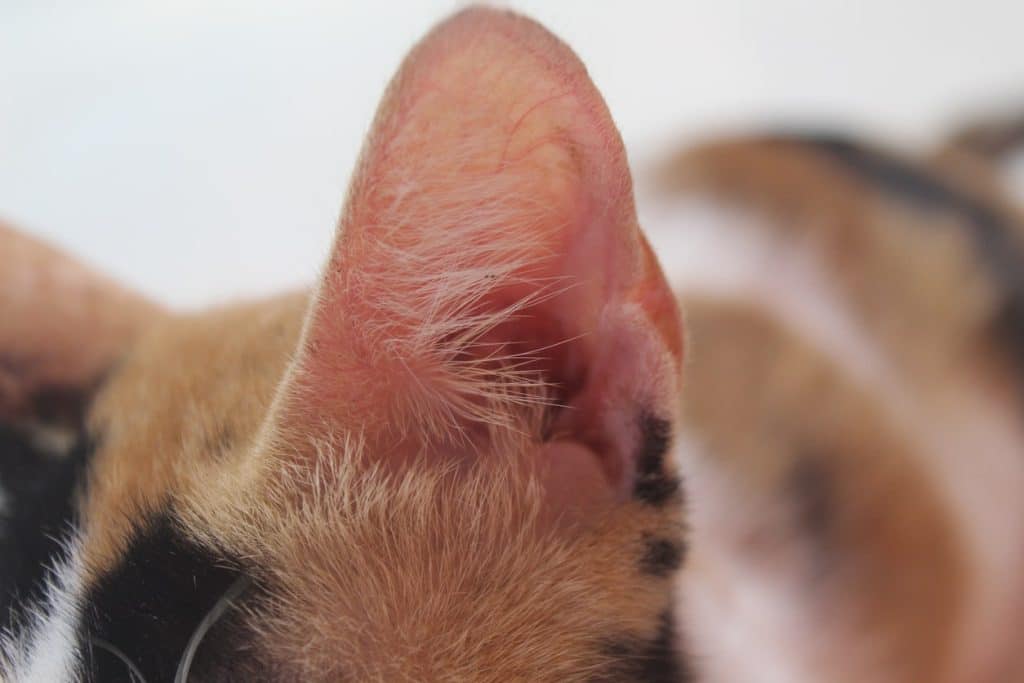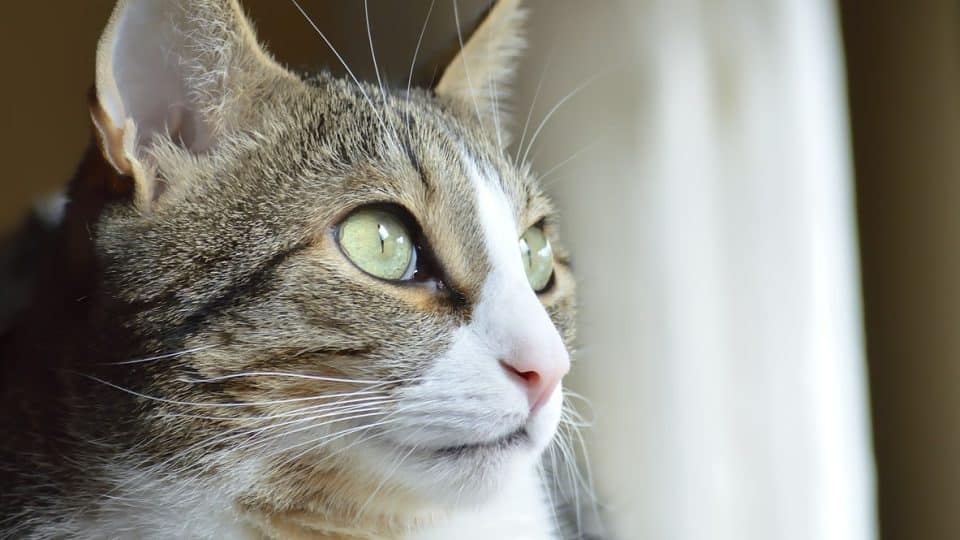Ever wondered how your cat is able to swivel their ears at lightning speed when you shake a treat bag? You can thank the vast network of muscles controlling their outer ears. “Cats have 32 muscles in their external ear to allow for full mobility,” says Paige Adams, a veterinarian at Etowah Veterinary Hospital. In comparison, we humans have a measly three muscles exterior ear muscles, while dogs have 18.
While these muscles offer extra maneuverability, a cat’s ears have other bonus perks that give felines excellent hearing. Below, learn more about your cat’s ear structure, along with other cool facts.
How Many Muscles Are in a Cat’s Ear?
Sometimes, it may seem like the main purpose of a cat’s ear is to hone in on the sound of can openers before food time and disregard your requests to get off the counter. However, Dr. Adams explains a cat’s ear muscles serve these two important purposes:
- Better hearing: Your cat can position their ears towards the direction of certain sounds, allowing them to zero in on the sound, like a pair of antennae. They can even move their ears in different directions, enabling them to tune into multiple sounds at the same time.
- Body language: A cat can express their current mood through their ear position. For example, perked-up ears can indicate interest, while pulled-back “airplane ears” usually signify agitation. This can help your cat communicate their emotional state and help you understand how they feel.

iStock/Dian Zuraida
How Do Cat’s Ears Work?
A cat’s ear is broken up into three different sections with many of the same structures that a human or dog has; they even have the same basic function.
The outer ear
Your cat’s outer ear is the external structure you can see. The outer ear includes the pinna, which you’ll recognize as the pointy pink structure crowning your cat’s head. (Although, you may not notice it as much if your cat has floppy ears, like a Scottish Fold.)
The pinna funnels sound into the ear canal, which, in turn, drives sounds deeper into the middle and inner ear.
“A cat’s ear canal is deeper and longer than humans, which also helps funnel the sounds for better hearing,” Dr. Adams explains.
The middle ear
Dr. Adams says a cat’s middle and inner ear have a number of features that take the sounds and transmit the information all the way to the brain for it to be perceived.
The middle ear contains structures like your cat’s eardrum. The sound waves cause the eardrum to vibrate. This vibration transmits sound to three tiny bones called the ossicles. Human ears have their own version of these bones, which provide another link in the chain that transmits sound inward.
The middle ear also contains the eustachian tubes, which connect the middle ear with the nose to bring air into the ears.
The inner ear
The inner ear contains a “labyrinth” of complex structures divided into three main sections. It includes the cochlea, a spiral-shaped structure that helps with hearing, the vestibular system, and the semicircular canal. They all help a cat with their sense of balance.
The entire inner ear is submerged in a layer of cushioning fluid. When vibrations move into the inner ear, the fluid moves and signals nerve endings to jump into action. The nerve endings transmit the sound into your cat’s brain, where they interpret the sound.
However, just because your cat hears something, that doesn’t mean that they’ll react. Cats are masters of selective hearing. You’ve probably noticed that firsthand if you’ve ever tried to say your cat’s name while they’re busy relaxing.

iStock/caoyu36
What Can Cats Hear?
Not only can cats hear high frequencies, but Dr. Adams says they also have great hearing at low frequencies; this is an oddity in the animal kingdom.
According to research, cats seem to be able to hear between 48Hz to 85kHz, a broader range than humans and dogs. This extra-wide range allows them to pick up sounds that would fly under the radar for humans — like an animal skulking through the bushes outside. It’s no wonder why cats are such pros on the hunt.
You can see how a cat’s hearing compares to other animals (including people) in the chart below.
| Animal | Hearing Frequency Range |
| Cat | 45-85 kHz |
| Dog | 47-65 kHz. |
| Human | 64-23 kHz. |
| Cow | 23-35 kHz. |
| Horse | 55-33.5 kHz. |
What’s the Extra Flap on My Cat’s Ear?
The little flap on the outside of your cat’s ears is called a cutaneous marginal pouch, aka Henry’s Pocket. It’s a mystery exactly how this pouch got its secondary name and its purpose.
Dr. Adams says that Henry’s Pocket is thought to help cats hear at higher frequencies, but there isn’t any research that explores this claim. Some experts also believe that Henry’s Pocket may help the ears fold better or even just enhance your cat’s natural cuteness.
Regardless, it’s an adorable addition to their outer ears.

iStock/Savusia Konstantin
Takeaway
Your cat’s ears are a marvelous work of nature. The 32 muscles in the outer ear allow each ear to swivel independently and take in information about the world around them. At the same time, features like an extra deep ear canal help give them an auditory edge over humans and dogs.
Now, if only you could get them to pay more attention when you call their name to come!



